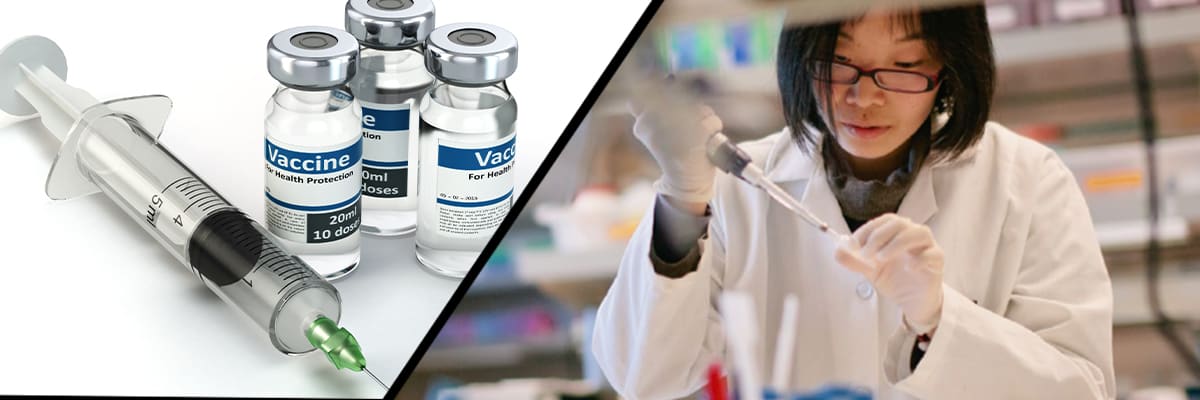Why Temperature Controlled Medication Storage is Essential
An Overview of Biologic Medications and Specialty Pharmaceuticals

To achieve better patient outcomes from complex diseases, manufacturers are producing a wide array of biologic pharmaceuticals, or specialty medications, that treat everything from autoimmunity, dermatitis and hemophilia, to cancer, multiple sclerosis and diabetes.
Unlike traditional small-molecule drugs that are chemically synthesized, biologics are large-molecule products manufactured via more structurally complex biotechnology processes. Because of their components and structure, biologics are extremely sensitive to heat and cold temperatures outside of the acceptable range established by manufacturers. A range of these medicines need to be refrigerated, including insulins, antibiotic liquids, injections, eye drops and some creams. These medicines must be stored between 2ºC and 8ºC.
Pharmaceutical manufacturers, logistics service providers, specialty distributors all the way to specialty pharmacies play a critical role in ensuring proper temperature management of these drugs. In fact, specialty pharmacy manufacturers are required to follow EU GDP and U.S. FDA regulatory guidance for the handling, storage, and distribution of temperature-sensitive biologic medicines, which may require additional special handling due to the sensitive nature and potentially time-critical supply chain.
Proper temperature control and monitoring are imperative
The rigorous regulatory requirements specialty pharma manufacturers must follow may be more complex for specialty drugs because any kind of temperature excursion could result in a harmful modification of a biologic’s structure or even a possible degradation. This not only affects the efficacy of the products, but more importantly, temperature changes could also seriously affect the prescribed patient therapy and safety.
The requirements for biologics include stringent temperature control and continuous monitoring strategies that must be in place from the time the biologics are manufactured until they are distributed, whether within the pharmacy itself, or when shipped direct to a patient or physician.
As an example, consider what a pharmaceutical manufacturer must do to ensure proper temperature control in a shipment from its manufacturing facility through to its distribution chain with many chains of custody handoffs to a pharmacy. All licensed pharmacy personnel must be aware of the potential environmental challenges and shipping conditions of the product—and prepare the product properly—as it’s shipped via multiple in-transit transfers and hand-offs across different geographies and temperature zones. Excessive temperature variations or loss of control during the shipping cycle could significantly affect the quality of the product and its efficacy.
The pharma manufacturer assumes responsibility throughout the supply chain
Pharma manufacturers must take it upon themselves to gain a full understanding of the requirements and stability data, as well as the challenges, risks, and industry best practices, for temperature control and monitoring. They must have a firm grasp of the specific guidelines for compliance with current government and state regulations. Ultimately, they must know how to protect product integrity and efficacy while delivering the utmost in patient safety.
Full and proper compliance requires awareness, in-depth education, and training. It also requires proper equipment and supplies, along with special standard operating procedures (SOPs) for the refrigeration and shipping of these products.
Case in point: The impact of thermal packaging and shipping routes
Thermal packaging and shipping routes are two critical areas where temperature excursions could occur. Depending on the assigned route, the designated carrier most likely picks up the shipment via truck at the manufacturer's distribution center, let’s say in the state of Illinois, and then delivers it to the nearest airport for air transport or ground transportation. The final leg of the journey, let’s say, is to Florida to the specialty pharmacy, which is once again by ground transport.
Along the route, there could be differences in geography, ambient temperatures, and humidity. Temperatures within each carrier’s transport unit and storage areas may vary too, as could carrier procedures and expected versus actual delivery times.
In some cases, thermal packaging is used. Commercially available thermal packing is designed to maintain a specific internal temperature range for shipments. However, the reliability of the packaging during shipping, and consequently the integrity of the products, can be assured only if the designed pack out, with materials such as gel packs and dunnage, are properly configured before the product is shipped.
If there are temperature excursions caused by any of the environmental or carrier conditions mentioned above, then the packaging reliability can be adversely impacted. If at any time during the shipping process, the temperature of the biological product is out of an acceptable range, product quality and efficacy can be compromised.
Without proper temperature controls and continuous monitoring, these kinds of excursions can often go unnoticed, which would present significant risks not only to the pharmacy, but more importantly, to the patients who will ultimately be using the products.
Final Thoughts
Sensitech has decades of experience and a team of in-house experts dedicated to improving your supply chain. If you're interested in learning more about our cold-chain solutions, sign up for our newsletter today!
For more comprehensive information, download the full white paper: Biologic Medications and the Specialty Pharmacy: A Practical Reference Guide for Ensuring Efficacy and Patient Safety through Proper Cold Chain Management.


